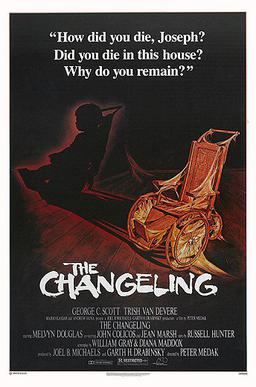Here's an example of two kinds of ghost story that I like a lot: the returning lover, and the "ambiguous ghost". It's also an Italian movie, and I'm all about Italian horror movies. It's co-written and directed by Mario Bava, probably the greatest of all Italian horror movie directors, and it features top horror star Christopher Lee. To top it all off, it was a very controversial movie in its day and was cut to shreds in most countries when it was first released, to the point where it was apparently incomprehensible.
If released now, it would probably be rated PG.
The Whip and The Body is Gothic horror in all senses. It's a period movie (though as with many of these things, the period it is set in is ambiguous) and it features a crumbling old castle, secret passages, doomed love, unsympathetic characters, delirium, suicide, murder, and unmotivated coloured lighting.
The story involves the return of Kurt (Christopher Lee) to the family home and the disruption this causes. Kurt's former lover Nevenka (played by stunning Israeli actress Daliah Lavi) is now married to his brother, who is in love with another woman, Katia. The housekeeper, Giorgia (Bava regular Harriet White Medin), is still grieving the loss of her daughter, who had committed suicide after being seduced then abandoned by Kurt. Of course, Kurt's return awakens old passions in Nevenka, and the thoroughly hissable Kurt revels in the chaos he is causing.
So far, so whatever. But what made this movie so controversial (and still makes is quite unusual) is that Kurt and Nevenka's relationship is openly sadomasochistic. A good four years before Luis Buñuel's brilliant
Belle de Jour,
The Whip and the Body features a woman with vivid masochistic fantasies as its protagonist and puts the viewer within her viewpoint.
As a movie of its time, it is not terribly sympathetic to its sadomasochistic couple even as it mines them for prurient interest. Kurt is portrayed as a vile and utterly self-absorbed villain, and Nevenka is shown to be mentally ill. Tony Kendall as Nevenka's husband and Ida Galli as his unrequited love interest are probably supposed to be the audience identification figures, but Dahlia Lavi and Christopher Lee dominate the movie, with performances far more memorable than any of the supporting cast, so that despite their obvious defects we are far more interested in them.
But then again Heathcliffe and Cathy were not terribly sympathetic either, and people just love
Wuthering Heights (which was definitely an influence on this movie), so audience sympathy is obviously a tricky thing.
Before long, Kurt is murdered and the movie becomes a combination of whodunnit (far too easily guessed) and romantic ghost story, as the shade of Kurt seems to visit Nevenka in the night, filling her with a combination of terror and desire. Is that the sound of his horse-whip, or is it just the trees lashing against the castle walls?
Incidentally, Lee apparently has a clause written into his contracts that he will not be required to perform scenes of a sexual nature or even to kiss on the lips. (Which hasn't stopped directors like Jess Franco from some creative editing to put him into outrageous scenes.) Either this clause was not present in his
Whip and the Body contract or he chose to ignore it, as his scenes with Lavi are about as steamy as you could get at the time.
As usual, Bava's mastery of the camera turns the movie into a visual feast. As well as co-writing (with Ernesto Gastaldi, master of kinky Italian horror) and directing he is the uncredited cinematographer and the camera operator, and he also executed the matte paintings and other special effects.
This almost makes up for the slightly cheesy score by Carlo Rustichelli, which sounds like something out of a soap opera. Others (such as Bava's biographer Tim Lucas) praise Rustichelli to the skies, but compared to other Italian genre composers like Ennio Morricone, Bruno Nicolai and Riz Ortolani, he doesn't sound interesting to me.
There are several notable plot holes in the movie, and I didn't find the ending terrinly satisfying. The biggest problem, however, is that Christopher Lee did not dub his own voice on the English-language track. (Everyone except for Lee voiced their own role on the Italian-langue track.) Lee has a particularly commanding voice, so this is a real pity.
It's also not really the best introduction to Italian horror or to the films of Mario Bava. There are actually two other Bava ghost stories that I like more (the mind-bending, if dreadfully titled,
Kill Baby Kill! and the utterly terrfying "Drop of Water" segment of the anthology film
Black Sabbath), both of which I intend to get to later in this series, but when Kate visited me recently, she saw the dvd cover of this movie and wondered what the hell I had been watching (and it does indeed look lurid, as demonstated below) so I thought I would do this now.














